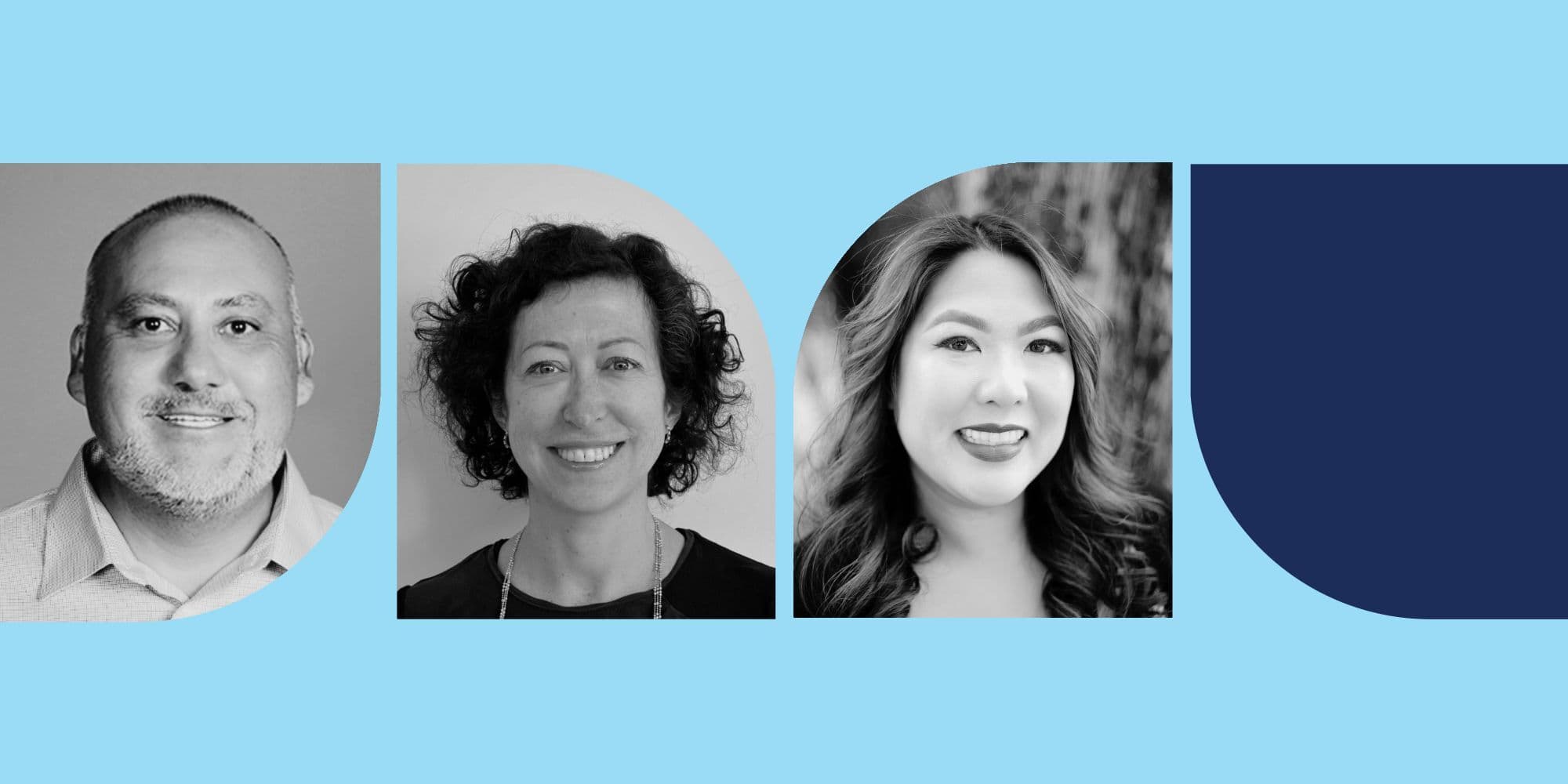When Victor Bracamontes was searching for a new job, he sought out companies with strong commitments to diversity, equity, and inclusion (DEI). After interviewing for a role at Atlassian, he was so impressed with their approach to DEI that he jumped at the chance to work for the software company when they made him an offer.
“During the hiring process, they talked about Atlassian’s values, and one was ‘be the change you seek,’” says Bracamontes, who joined the company in 2022 as a senior technical program manager. To help carry out that mission, he immediately got involved in the company’s employee resource group (ERG) for Latinx employees and is now its global chair.
“The fact that Atlassian recognized the need for ERGs and is giving employees the space and opportunity to have that kind of allyship with different groups is a huge reason why I joined the company,” says Bracamontes, who works remotely in San Diego.
But this wasn’t always the case. In fact, Atlassian’s nine ERGs were only recently launched in the spring of 2022. The development of these groups is part of the broader strategy for the company to deliver on its commitment to DEI, which Atlassian admits had room for improvement. As an organization that is proud of its “no BS” value, Atlassian is taking an open and honest approach to setting and achieving its DEI goals.
Over the past 14 months, the DEI team has expanded from three to seven members, who are working to embed diversity, equity, and inclusion at Atlassian. In addition to creating ERGs—which helps the company build a more inclusive culture—Atlassian has intentionally set ambitious goals to increase the hiring rates of underrepresented groups, starting with Black and Latinx employees as well as women.
Though Atlassian is still in the early stages of executing its DEI strategy, employees appreciate the work that’s being done—and understand the positive impact it will have on the company.
“To me, it’s really important Atlassian is seeing what they can do to diversify the workforce because it brings strength to the company,” Bracamontes says. “I think it just makes everyone better.”
Creating a more inclusive hiring process
In 2021, Atlassian established clear goals to increase the representation of women (to 41%), Black employees (to 10%), and Latinx employees (to 15%) by the end of 2022. Although it did not meet its overall goals, its hiring rates for underrepresented groups did rise by 8.9% for women, 63.6% for Black employees, and 3.3% for Latinx employees. For 2023, the company will continue striving to achieve these goals.
One of the ways Atlassian is working toward this is by reconfiguring its recruiting and hiring processes to ensure that they’re as inclusive and equitable as possible, says Alice Young, Atlassian’s Diversity, Equity, and Inclusion Leader for Talent Acquisition, who is based in Australia.
“Our systemic approach is about making our end-to-end talent acquisition process as equitable as it can be by removing barriers for underrepresented candidates especially. In doing this, we’re making the process fairer for everyone,” she says. “And having goals—which set direction and signal intent—gives the whole organization something to focus on and reach for without the tokenism associated with mandatory targets or quotas. It is a really important distinction.”
Another factor in revamping the hiring process included adjusting the questions that recruiters ask hiring managers during intake and debrief meetings. “These meetings are critical for ensuring equitable outcomes in the hiring process, which is why we’ve ensured that there is structure that helps de-bias recruiting outcomes,” Young says.
Atlassian’s strategy also includes intentionally sourcing talent from a wider pool of candidates, and providing hiring managers and recruiters with the tools to do so, including partnering with external organizations. This aligns with Atlassian’s TEAM Anywhere approach, which opens up job opportunities regardless of where someone is located within the company’s footprint—and has therefore broadened their reach for diverse talent.
Investing in future tech talent
On top of Atlassian’s goals to increase representation in its own workforce, the company is doing its part to help underrepresented groups gain access to careers in tech in order to diversify the industry in the future.
Atlassian has invested time and resources into creating meaningful partnerships with organizations whose work supports historically marginalized communities to access careers in tech. For example, they partner with Code2College, an organization that strives to increase the number of minority high school students in STEM careers, and provides mentorship and internships so that students can experience what it’s like to work at a tech company.
“I’m personally passionate about that work because you can’t be what you can’t see, and this program helps young people understand that there are people like them in tech, and they too can access these careers,” Young says.
Over the last two years, Atlassian has also established a partnership with /dev /color, a global community for Black technologists. Atlassian partners with /dev/color in multiple ways, such as providing free memberships for Black Atlassians, presenting at the organization’s careers conference last year, and investing $100,000 in its incubator program for Black entrepreneurs. In the long-term, working with /dev /color is helping Atlassian provide a safe space and community for Black technologists, ultimately supporting their working experience at the company.
“It’s our way of investing in our own industry, making it more diverse longitudinally,” Young says.
Establishing ERGs to foster diverse communities
One key area Atlassian acknowledged it needed to improve was fostering community and belonging through ERGs—and the company was determined to introduce them. Employees like Janice Wong-Perez, who joined the company in 2021 as a workplace experience manager, got a front-row seat into the decision-making process of creating these groups.
“The company held listening sessions where anyone that was interested in joining an ERG group could chime in and talk about what’s important to them,” says the Bay Area–based Wong-Perez, who is now the Americas regional lead for the Atlassian Asian Alliance ERG. “Having a safe space to compare notes with people who’ve had similar experiences to me is invaluable.”
From there, it’s been an employee-led movement with Atlassian providing structure, support, and funding (including almost $25,000 in learning stipends). Each group is developing its own goals, projects, and programs, which will likely focus on mentorship, talent acquisition, professional development, and supporting one another.
Bracamontes’s group—Juntos, which means “together” in Spanish and Portuguese—is not only devoted to supporting Latinx employees, but also focused on building allyship across the company.
“My vision is to make sure that we are inclusive of everyone,” he says. “We want to help to build a supportive and uplifting environment within Atlassian. And I really hope that everyone within the company can join an ERG group so that we’re all included and involved in making the company better.”
Laying the groundwork for what’s ahead
From setting new hiring rate goals to building internal communities and giving all employees a voice, Atlassian’s DEI efforts over the last couple of years haven’t gone unnoticed by employees. In fact, it has built a greater sense of trust.
“I’m really proud of our DEI team overall,” Wong-Perez says. “For us to continue to invest in this DEI community really means a lot. I think we’ve got some exciting times ahead of us.”
Young says the DEI team still has plenty of work to do, but she is energized by the opportunity to drive systemic change.
“We understand that a lot of barriers are built into the way ecosystems run, including in the world of business,” she says. “By analyzing them and looking for opportunities to build back better, you can remove bias out of the system. That’s the beauty of taking a long-term approach: DEI is not an initiative—it’s part of the business strategy.”

